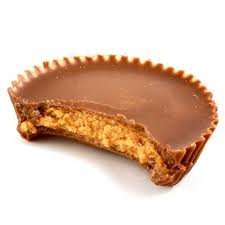
The German Shepherd Dog, also known as the Alsatian, is a German breed of working dog of medium to large size. The breed was developed by Max von Stephanitz using various traditional German herding dogs from 1899.
It was originally bred as a herding dog, for herding sheep. It has since been used in many other types of work, including disability assistance, search-and-rescue, police work and warfare. It is commonly kept as a companion dog, and according to the Fédération Cynologique Internationale had the second-highest number of annual registrations in 2013.
During the 1890s, attempts were being made to standardise dog breeds. Dogs were being bred to preserve traits that assisted in their job of herding sheep and protecting their flocks from predators. In Germany this was practised within local communities, where shepherds selected and bred dogs. It was recognized that the breed had the necessary skills for herding sheep, such as intelligence, speed, strength and keen senses of smell. The results were dogs that were able to do such things, but that differed significantly, both in appearance and ability, from one locality to another.
To combat these differences, the Phylax Society was formed in 1891 with the intention of creating standardized development plans for native dog breeds in Germany. The society disbanded after only three years due to ongoing internal conflicts regarding the traits in dogs that the society should promote; some members believed dogs should be bred solely for working purposes, while others believed dogs should be bred also for appearance. While unsuccessful in their goal, the Phylax Society had inspired people to pursue standardizing dog breeds independently.
When the German Shepherd was introduced to the United States it was initially a popular dog. But as the dogs' popularity grew, it became associated as a dangerous breed owned by gangsters and bootleggers. The reputation of the German shepherds as a dangerous breed had grown to such an extent that it was briefly banned to import them in Australia in 1929. Potential legislation was even considered to require that all German shepherds in South Australia be sterilized.
German Shepherds have a double coat which is close and dense with a thick undercoat. The coat is accepted in two variants: medium and long. The gene for long hair is recessive, and therefore the long-haired variety is rarer. Treatment of the long-haired variation differs across standards; it is accepted but does not compete against standard-coated dogs under the German and UK Kennel Clubs while it can compete with standard-coated dogs, but is considered a fault, in the American Kennel Club. The FCI accepted the long-haired type in 2010, listing it as the variety b, while the short-haired type is listed as the variety a.
Most commonly, German Shepherds are either tan/black or red/black. Most color varieties have black masks and black body markings which can range from a classic "saddle" to an overall "blanket". Rarer color variations include sable, pure-black, pure-white, liver, silver, blue, and panda varieties. The all-black and sable varieties are acceptable according to most standards; however, the blue and liver are considered to be serious faults and the all-white is grounds for instant disqualification from showing in conformation at All Breed and Specialty Shows.
German Shepherds are moderately active dogs and are described in breed standards as self assured. The breed is marked by a willingness to learn and an eagerness to have a purpose. They are curious, which makes them excellent guard dogs and suitable for search missions. They can become overprotective of their family and territory, especially if not socialised correctly. They are not inclined to become immediate friends with strangers. German Shepherds are highly intelligent and obedient, as well as protective of their owners.
If you want to read a whole lot more about this breed of dog, go here:
https://en.wikipedia.org/wiki/German_Shepherd
When you think of graham crackers, you might think of crushing them up to make a pie crust, or maybe sandwiching chocolate bars and toasted marshmallows between a couple of 'em for s'mores. Well, now we've taken it a step further by making a super moist, Graham Cracker Cake that's packed with flavor! Trust us, this is a recipe you'll want to get your hands on.
- 2 sticks (1 cup) butter, softened, divided
- 1 1/2 cups granulated sugar
- 1 (13.5-ounce) package graham cracker crumbs
- 2 teaspoons baking powder
- 3/4 cup milk
- 5 eggs
- 1 teaspoon vanilla extract
- 1/2 cup flaked coconut
- 1/2 cup chopped pecans
- 3 cups confectioners' sugar
- 1 (8-ounce) can crushed pineapple, undrained
- Preheat oven to 350º. Coat a 9- x 13-inch baking dish with cooking spray; set aside.
- In a large bowl with an electric mixer on medium speed, beat 1-1/2 sticks butter and the granulated sugar 3 to 4 minutes or until creamy. Add graham cracker crumbs, baking powder, milk, eggs, and vanilla, and beat until well mixed. Stir in coconut and pecans until well mixed, then spread batter into baking dish.
- Melt remaining half stick butter in microwave. In a large bowl, combine the melted butter, confectioners’ sugar, and pineapple until well mixed; pour evenly over batter.
- Bake 45 to 50 minutes or until a wooden toothpick inserted in center comes out clean. Allow to cool, then cut and serve.


.jpg)

















No comments:
Post a Comment